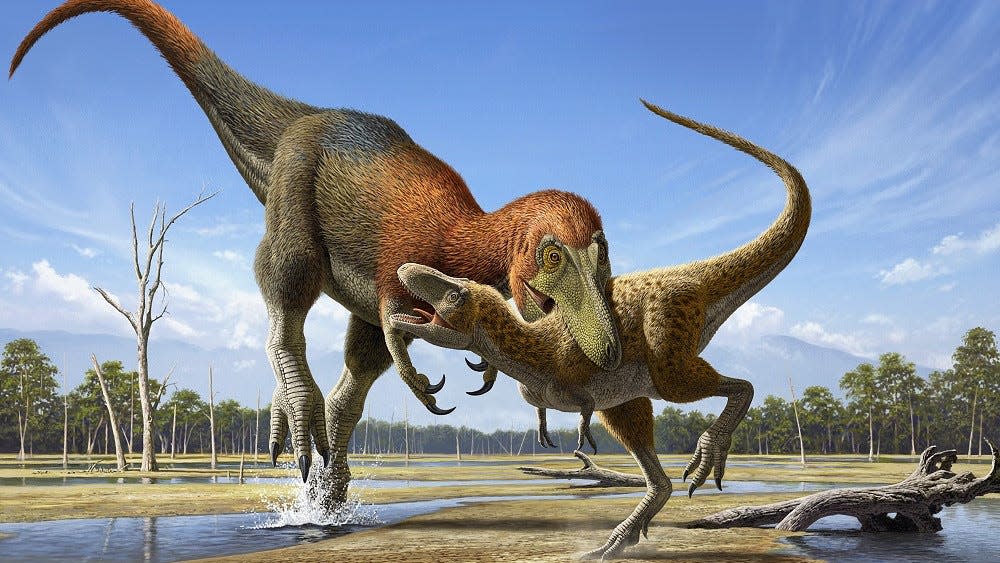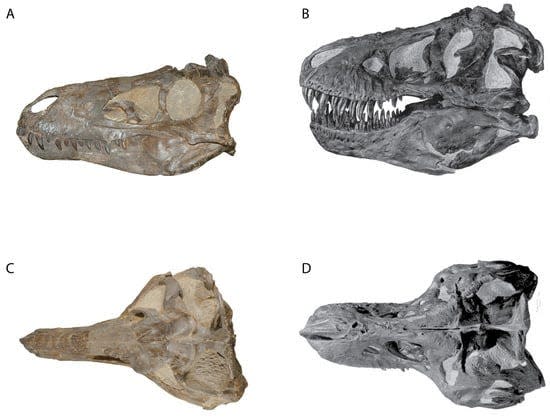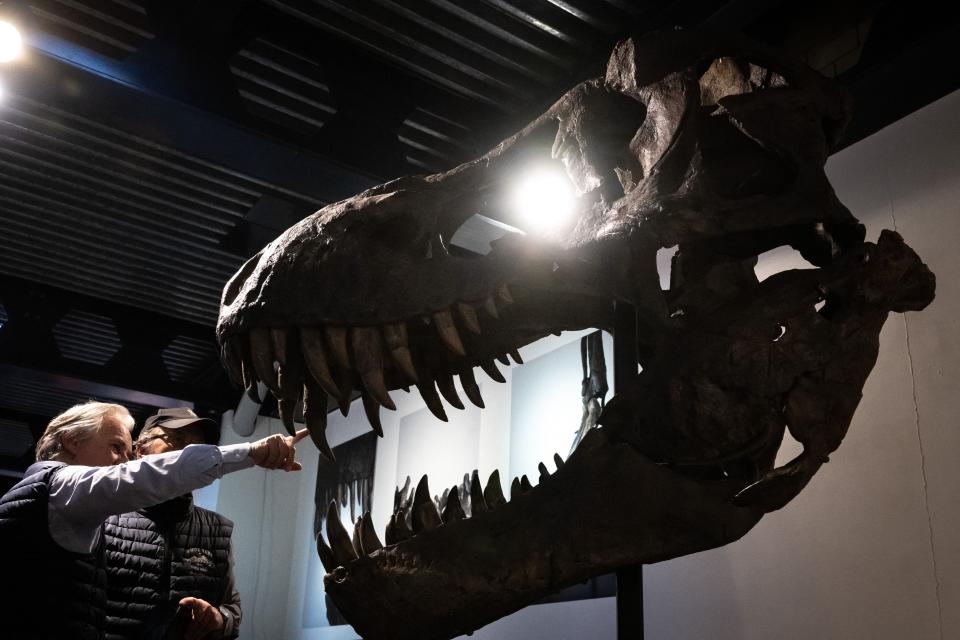Could T-Rex fossils found long ago be another dinosaur species? Study finds new evidence

Dinosaurs haven’t roamed the Earth for millions of years, but the nature of their reign has sparked no shortage of controversial debates among paleontologists that remain unresolved today.
Late last year, a new study reignited the age-old argument over just what caused the mass extinction of the ancient beasts 66 million years ago, positing that volcanic eruptions – not just the infamous meteor – played a role in wiping out the dinosaurs.
It's far from the only clash that has long unfolded among credible paleontologists who disagree over precisely what prehistoric fossils reveal about dinosaurs' time on Earth. This week, researchers breathed new life into another longstanding sticking point: are long-ago recovered fossils those of a juvenile Tyrannosaurus-Rex, or of another distinct species entirely?
Authors of a new study published Wednesday in the journal Fossil Studies claim the set of dinosaur fossils do not belong to a young T-Rex, but to a separate species known as a Nanotyrannus lancensis.
"I was very skeptical about Nanotyrannus myself until about six years ago when I took a close look at the fossils and was surprised to realize we'd gotten it wrong all these years," said lead author Nicholas Longrich, a paleontologist and senior lecturer at the University of Bath in the U.K. "When I saw these results I was pretty blown away."
'The ultimate killing machine:' Skull of massive prehistoric sea predator, the pliosaur, discovered in the UK
'Nanotyrannus just doesn’t look anything like a T-Rex'
Anyone who has seen “Jurassic Park” is keenly familiar with the size and ferocity of the popular T-Rex, one of the world’s most famous and widely-studied dinosaurs.
But the Tyrannosaurus-Rex may not have been the only large carnivore ruling over North America during the Late Cretaceous period. Several smaller specimens discovered since the 1940s have become a point of contention among paleontologists divided over whether the fossils are immature T-Rex bones or whether they're evidence of another smaller species (the Nanotyrannus lancensis) living in the predator's shadow.
Longrich and Evan Saitta, a paleontologist at the University of Chicago and research associate at Chicago's Field Museum of Natural History, teamed up to take another look at the fossils. The researchers' findings suggest that the growth patterns and anatomy are inconsistent with those of a T-Rex and instead constitute its distant relative.

By measuring growth rings on the fossils, the researchers found that they were closely clustered toward the outside of the bone. The discovery, they claimed, could be an indication that the dinosaur had reached close to its full size and was not an adolescent when it died.
Based on the researchers’ measurements, the animals would have reached a maximum size that was only about 15% that of the giant T-Rex, weighing no more than 3,300 pounds and standing 16 feet tall. In comparison, an adult T-Rex could weigh up to 17,600 pounds and towered 30 feet above the ground.
But Nanotyrannus and the T-Rex may not have just differed in size. The researchers reconstructed the dinosaur's anatomy and posited that the smaller animal tended to have a narrower snout, smoother teeth, longer legs and larger arms.
The newest piece of evidence Longrich unearthed was a fossil frontal bone gathering dust at the University of California Museum of Paleontology. After examining it closer, the researchers identified it as a juvenile T-Rex due to critical differences between it and the hypothesized Nanotyrannus fossils.
“In the same way that kittens look like cats and puppies look like dogs, the juveniles of different tyrannosaurs are distinctive," Longrich said. "And Nanotyrannus just doesn’t look anything like a T-Rex."
Other scientists doubt researchers' claims

The researchers' conclusions are unlikely to end the debate over the disputed existence of the Nanotyrannus.
Many other scientists remain unconvinced that the fossils belong to anything other than a teenaged T-Rex.
"The article doesn't settle the question at all," Thomas Carr, a vertebrate paleontologist and an associate professor of biology at Carthage College in Wisconsin, told Live Science. "The authors don't seem to have a solid grasp on growth variation in tyrannosaurs."
Holly Woodward, a paleontologist at Oklahoma State University, was also skeptical.
“I’m not convinced that their interpretation is more accurate than ours,” Woodward, who authored a 2020 study supporting the theory that fossils are those of a young T-Rex, told New Scientist.
But Longrich, who was once doubtful himself, now considers himself a convert.
“It’s amazing to think how much we still don’t know about the most famous of all the dinosaurs," he said. "It makes you wonder what else we’ve gotten wrong.”
Eric Lagatta covers breaking and trending news for USA TODAY. Reach him at [email protected]
This article originally appeared on USA TODAY: Researchers suggest T-Rex fossils are another species. Not all agree
